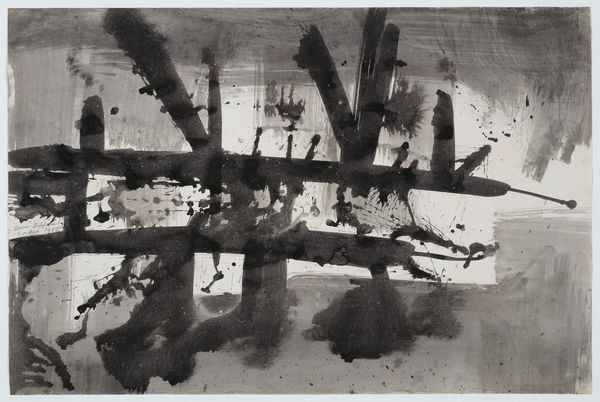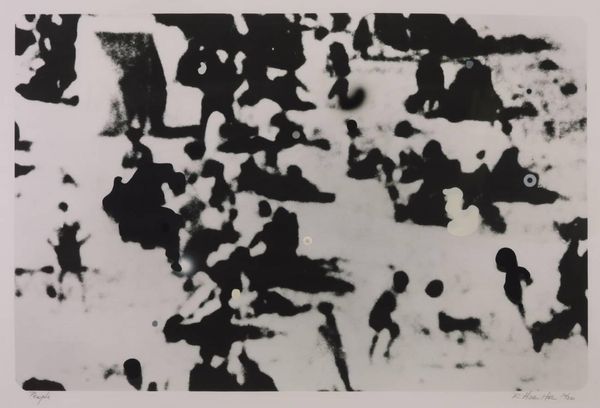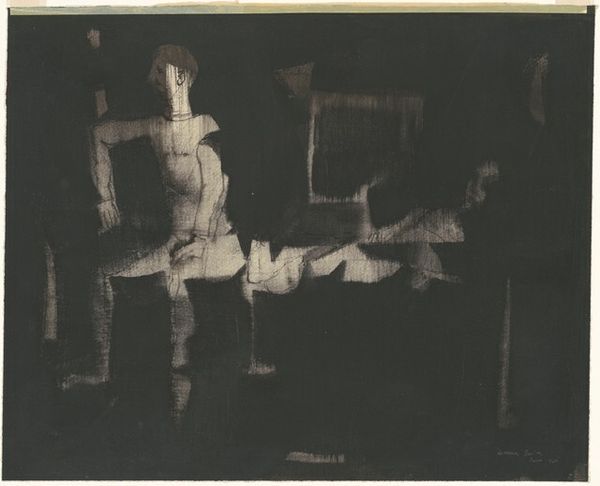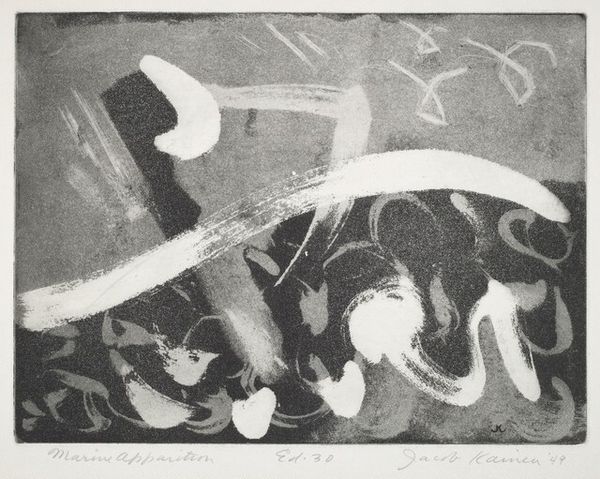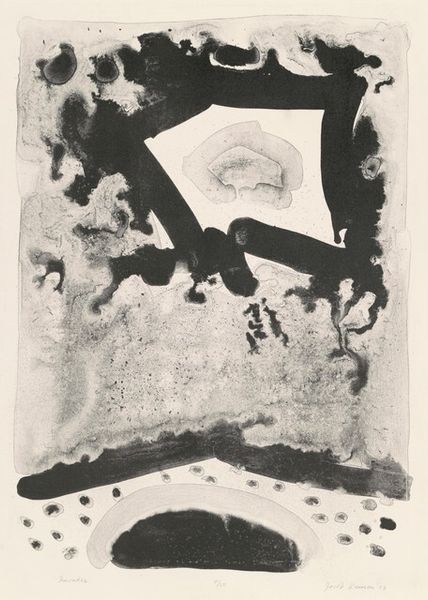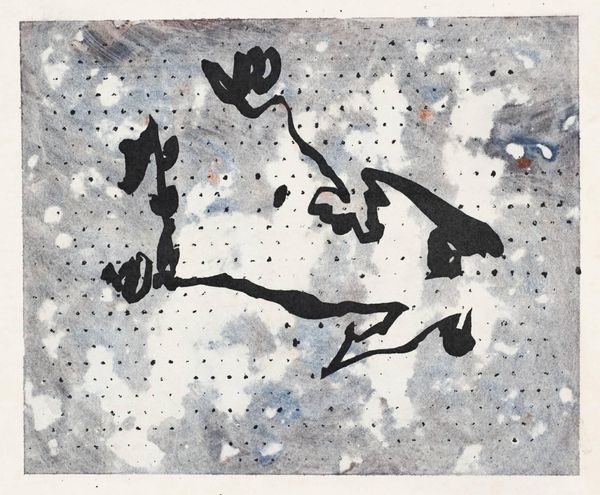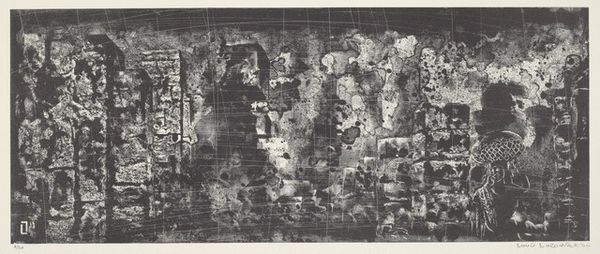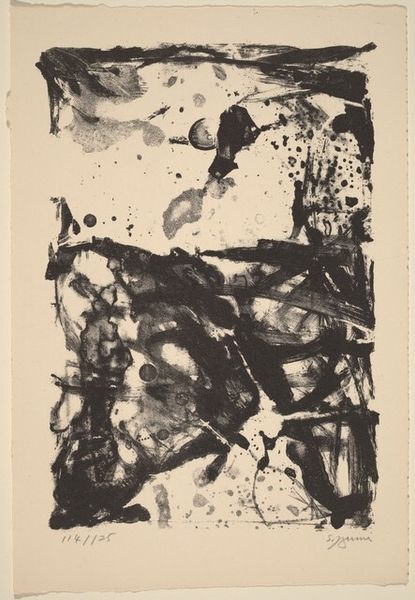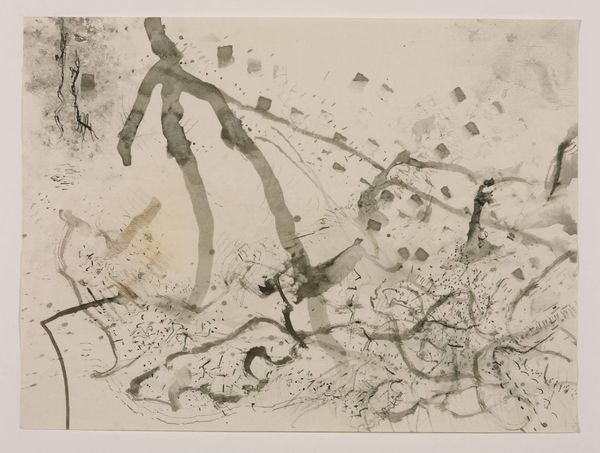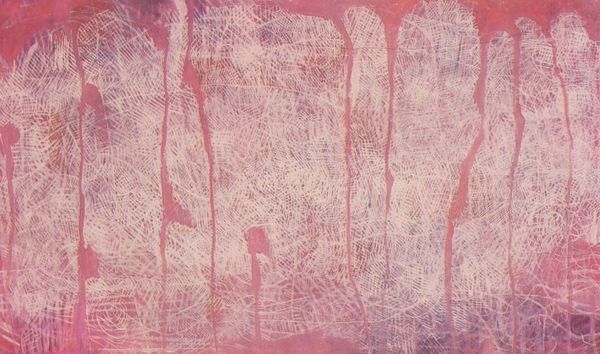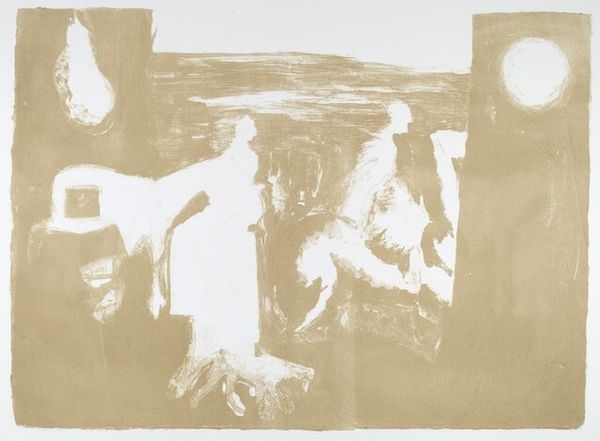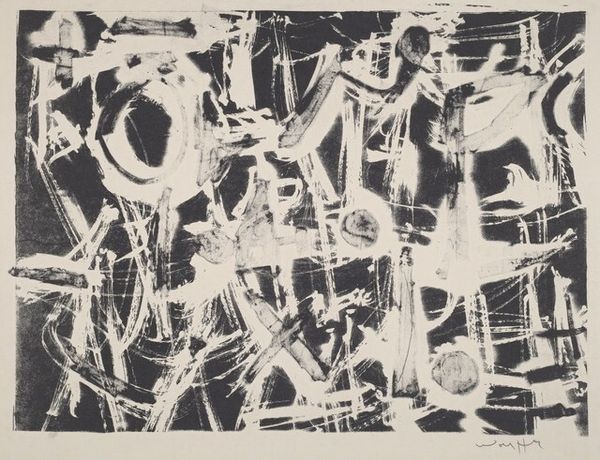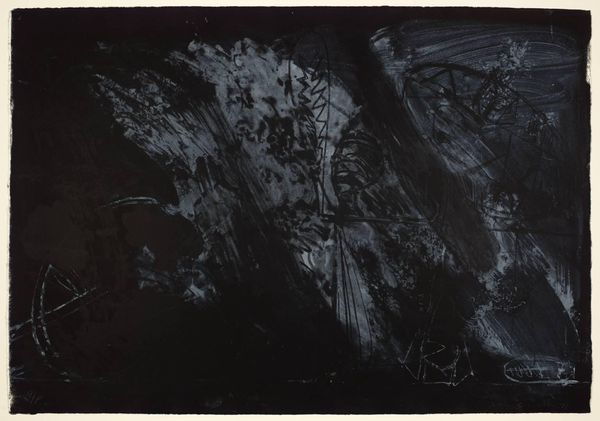
drawing, photography, rayograph
#
abstract-expressionism
#
drawing
#
photography
#
geometric
#
abstract-art
#
line
#
abstract art
#
rayograph
Dimensions: overall: 29.4 x 44.6 cm (11 9/16 x 17 9/16 in.)
Copyright: National Gallery of Art: CC0 1.0
Curator: This is an untitled work by David Smith, created in 1962 using the rayograph technique, a form of cameraless photography. Editor: The ethereal quality immediately grabs me. It’s as though a skeleton of an exploded form is caught in the midst of… dematerialization. A fascinating use of light and shadow. Curator: The process itself echoes that feeling of dematerialization. Smith placed objects directly onto photosensitive paper, exposing them to light. Where the objects blocked the light, the paper remained white, creating these ghostly silhouettes. It’s a physical impression, a literal shadow of an object's existence. Editor: Semiotically speaking, the work relies heavily on indexicality. The shapes presented are a direct trace of what once was; the image, as a sign, exists precisely because of its relationship to the physical objects Smith used. It's like an echo of the tangible. Curator: Precisely! The geometric forms and scattered lines are also suggestive of Icarus, post-fall – his wrecked mechanical wings fading against the heavens. The light becomes both a destructive and a revealing force, imbuing the abstract with a sense of narrative tragedy. Editor: That’s compelling. To my eye, however, I’m struck by the careful compositional balance amid seeming chaos. The diffuse forms interact dynamically, establishing a clear foreground against that subtle, graded background. Curator: Which further deepens that sense of melancholic detachment; it’s visually pulling the viewer into an unresolvable moment of ruin and possible genesis. The 'snapshot' arrests us to the fall's existential meaning. Editor: Genesis, perhaps. I can agree to that – though what truly distinguishes it from more reductive forms of geometric abstraction, like let's say, the Constructivists' formalism is that, in this image, something is also inherently obscured or unrecoverable. Curator: Obscured, indeed – or perhaps becoming: dissolving as archetypes themselves transform through cycles of creation and destruction, represented by this strange light. Editor: That feels about right, actually. I hadn’t considered it in that light, but the image gains further richness when you consider its symbolic function – adding dimensions well beyond a structuralist reading alone.
Comments
No comments
Be the first to comment and join the conversation on the ultimate creative platform.
